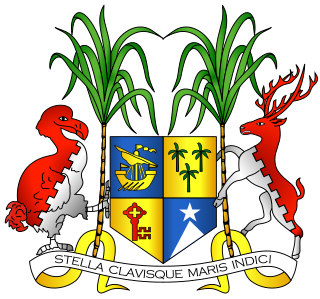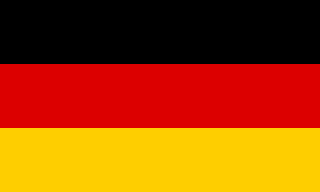
The economy of Cambodia at present follows an open market system and has seen rapid economic progress in the last decade. Cambodia had a GDP of $18.05 billion in 2015. Per capita income, although rapidly increasing, is low compared with most neighboring countries. Cambodia's two largest industries are textiles and tourism, while agricultural activities remain the main source of income for many Cambodians living in rural areas. The service sector is heavily concentrated on trading activities and catering-related services. Recently, Cambodia has reported that oil and natural gas reserves have been found off-shore.

The Industrial Revolution was the transition to new manufacturing processes in Europe and the US, in the period from about 1760 to sometime between 1820 and 1840. This transition included going from hand production methods to machines, new chemical manufacturing and iron production processes, the increasing use of steam power and water power, the development of machine tools and the rise of the mechanized factory system. The Industrial Revolution also led to an unprecedented rise in the rate of population growth.

Macau or Macao, officially the Macao Special Administrative Region of the People's Republic of China, is a special administrative region on the western side of the Pearl River estuary in southern China. With a population of 653,100 in an area of 32.9 km2 (12.7 sq mi), it is the most densely populated region in the world.

Myanmar is an emerging economy with a nominal GDP of $69.322 billion in 2017 and an estimated purchasing power adjusted GDP of $327.629 billion billion in 2017 according to World Bank. For 2018 estimate, the country's per capita will be $6,509 in PPP per capita and $1,490 in nominal per capita.
The Information Age is a historic period in the 21st century characterized by the rapid shift from traditional industry that the Industrial Revolution brought through industrialization, to an economy based on information technology. The onset of the Information Age can be associated with William Shockley, Walter Houser Brattain and John Bardeen, the inventors and engineers behind the first transistors, revolutionising modern technologies. With the Digital Revolution, just as the Industrial Revolution marked the onset of the Industrial Age. The definition of what "digital" means continues to change over time as new technologies, user devices, methods of interaction with other humans and devices enter the domain of research, development and market launch.

Novartis International AG is a Swiss multinational pharmaceutical company based in Basel, Switzerland. It is one of the largest pharmaceutical companies by both market capitalization and sales.

A generic drug is a pharmaceutical drug that has the same chemical substance as the drug that was originally developed, patented and innovated. Generic drugs are allowed for sale after the expiry of the patent of the original drugs. Because the active chemical substance is the same, the medical profile of generics is believed to be equivalent in performance. The generic drug has the same active pharmaceutical ingredient (API) as the original, but it may differ in characteristics such as manufacturing process, formulation, excipients, color, taste, and packaging.

The economic history of Japan is most studied for the spectacular social and economic growth in the 1800s after the Meiji Restoration, when it became the first non-Western great power, and for its expansion after the Second World War, when Japan recovered from devastation to become the world's second largest economy behind the United States, and from 2013 behind China as well. Scholars have evaluated the nation's unique economic position during the Cold War, with exports going to both U.S.- and Soviet-aligned powers, and have taken keen interest in the situation of the post-Cold War period of the Japanese "lost decades".

The pharmaceutical industry discovers, develops, produces, and markets drugs or pharmaceutical drugs for use as medications to be administered to patients to cure them, vaccinate them, or alleviate a symptom. Pharmaceutical companies may deal in generic or brand medications and medical devices. They are subject to a variety of laws and regulations that govern the patenting, testing, safety, efficacy and marketing of drugs.
Research and development became increasingly important to the Japanese economy through the 1970s and 1980s and obtained significant support from the Japanese government.

Japan's major export industries include automobiles, consumer electronics, computers, semiconductors, copper, iron and steel.
The pharmaceutical industry is one of the leading industries in the People's Republic of China, covering synthetic chemicals and drugs, prepared Chinese medicines, medical devices, apparatus and instruments, hygiene materials, packing materials, and pharmaceutical machinery.
The pharmaceutical industry in India ranks 3rd in the world terms of volume and 14th in terms of value. According to the Department of Pharmaceuticals, Ministry of Chemicals and Fertilizers, the total turnover of India's pharmaceuticals industry between 2008 and September 2009 was US$21.04 billion. Hyderabad, Mumbai, Bangalore and Ahmedabad are the major pharmaceutical hubs of India. The domestic market was worth US$13.8 billion in 2013.

The first AIDS case identified in Brazil was in 1982. Infection rates climbed exponentially throughout the 1980s, and in 1990 the World Bank famously predicted 1,200,000 cases by 2000, approximately double the actual number that was later reported by the Brazilian Ministry of Health and most international organizations. South and Southeast have 75% or more of this infection. The Northeast has 33% of the population but only 10% of AIDS.
The technological and industrial history of China is extremely varied, and extensive. China's industrial sector has shown great progress using most of its technology from the 1950s.

The Agreement on Trade-Related Aspects of Intellectual Property Rights (TRIPS) is an international legal agreement between all the member nations of the World Trade Organization (WTO). It sets down minimum standards for the regulation by national governments of many forms of intellectual property (IP) as applied to nationals of other WTO member nations. TRIPS was negotiated at the end of the Uruguay Round of the General Agreement on Tariffs and Trade (GATT) between 1989 and 1990 and is administered by the WTO.

Crime in Paraguay has increased in recent years with criminals often targeting those thought to be wealthy. Although most crime in Paraguay is nonviolent, there has been an increase in the use of weapons and there have been incidents where extreme violence has been used.

The Judiciary of Mauritius is responsible for the administration of justice in Mauritius and has as mission to maintain an independent and competent judicial system which upholds the rule of law, safeguards the rights and freedom of the individual and commands domestic and international confidence. The Constitution provides for the institution of an independent judiciary which is based on the concept of separation of powers. Mauritius has a single-structured judicial system consisting of two parts, the Supreme Court and the Subordinate Courts. The Subordinate Courts consist of the Court of Rodrigues, the Intermediate Court, the Industrial Court, the District Courts, the Bail and Remand Court, the Criminal and Mediation Court and the Commercial Court. The Chief Justice is head of the judiciary. The Constitution of Mauritius is the supreme legal document of the country. The final appeal from decisions of the Court of Appeal of Mauritius to the Judicial Committee of the Privy council in London as provided for under the Constitution of Mauritius.
The US carries out 46% of global research and development (R&D) in life sciences, making it the world leader.















